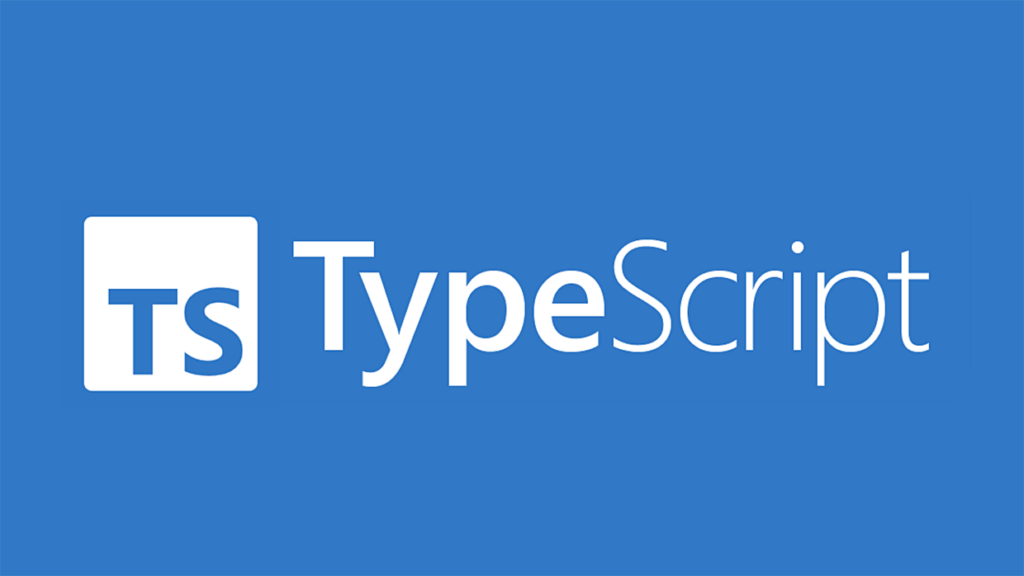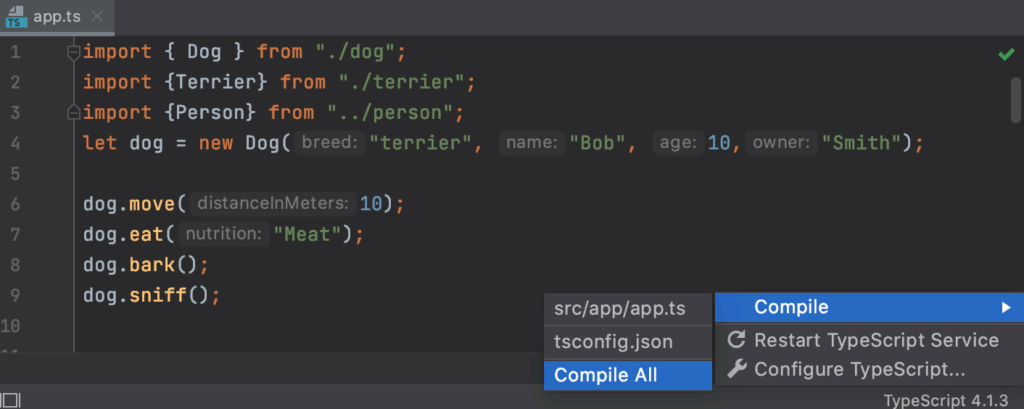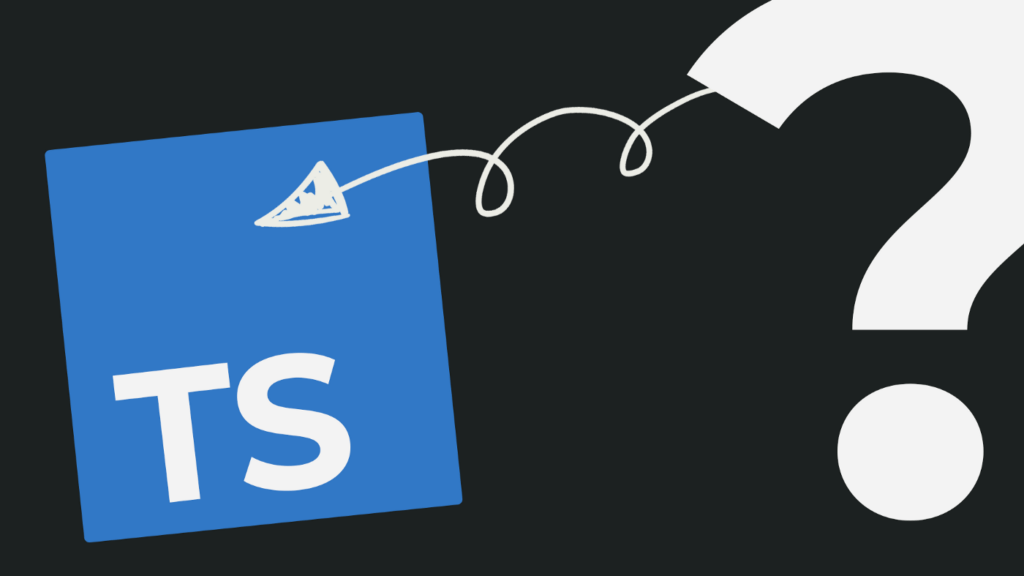TypeScript is an open-source, object-oriented programming language that Microsoft made and keeps up to date. It is licensed under the Apache 2 license. Is that all there is to TypeScript though? And is it worth using?
In this article, we will talk about what TypeScript is, where it came from, and what it can do for you. Let’s not waste any time and just get started, shall we?
What is TypeScript?
TypeScript, which is sometimes abbreviated as TS, is basically just JavaScript with the syntax for types added. W3Schools’s definition of TypeScript says that it is a syntactic superset of JavaScript that includes static typing. This means that TypeScript adds syntax on top of JavaScript, which lets programmers make types.
Because of this, it is perfectly fine to use JS syntax in TS. The way that text is put together to make up a program is called its syntax.
TypeScript is also JavaScript with the most recent ECMAScript features and a static type system. TypeScript gets turned into JavaScript when it is compiled, so browsers run JavaScript and not TypeScript.
History
Anders Hejlsberg, who worked at Microsoft and made the C# programming language, is the main architect behind the TypeScript language. TypeScript is an open-source programming language that Microsoft supports. It is also thought of as a set of tools. Version 0.8 of TypeScript came out for the first time in October 2012, but version 4.0, which came out in August 2020, is the most recent version.

TypeScript is a programming language that is used by both Microsoft and Google. TypeScript was first made by Microsoft, which is why Google chose to use it to make Angular, starting with version 2 and going all the way up to version 12. (the current version). It is the only language that can be used to build Angular2+ apps.
During the development process, the language is also built on top of JavaScript. It works with every JavaScript feature and idea there is to work with.
Recommended reading: Best Javascript Tutorial for Beginners
Advantages
When TypeScript first came out, some developers were worried about learning the new skills they would need. On the other hand, over time, many people have grown to appreciate it. The language is most useful at the end of a project, not at the beginning.
This language is changing quickly, and the group of people who work on it is always growing. Because of this, there are often new versions. These new versions of TypeScript make it easier to start using it, make it easier to use it every day, and give it even more powerful features. In fact, TypeScript is the tenth most popular programming language, according to the PYPL PopularitY of Programming Language Index.
Once a developer is comfortable with a language, it is clear that they have a better understanding of the code and libraries that are used. But the auto-completion feature is probably going to be seen as its most important and ground-breaking contribution to front-end development. Back-end developers are likely to find this funny because they have known this for a long time. But this is one of its most important benefits for front-end developers.
It works like living documentation and lets tools (IDE) offer accurate and appropriate auto-completion choices.
Recommended reading: 10 Best JavaScript Charting Libraries: A Comprehensive List
How It Works
TypeScript is not already built into browsers or the vast majority of other platforms that run JavaScript, like node. The TypeScript package comes with a compiler called tsc. This compiler will take your carefully made TypeScript files, get rid of any parts that aren’t needed, and turn them into JavaScript. This will let the browser (or whatever platform you’re using) run your code as if it were written in JavaScript.
To set up tsc correctly, you will need to put a tsconfig.json file at the very top of your project. You can change more settings and choose which version of JavaScript to use when your TypeScript files are converted to JavaScript format.
7 Features of TypeScript
TypeScript’s goal is to fill in these gaps so that application-scale development can be done more quickly and easily. It is a programming language that builds on JavaScript and has strong typing. But there is a lot more to it than that. Let’s take a look at some of the most important things about it.
1. Enhanced IDE Support
TypeScript makes programming with JavaScript a lot better overall for people who use it. This is mostly because TypeScript has made IDEs (integrated development environments) more useful. The TypeScript compiler sends rich type information to the IDE in real time. This gives the user a number of advantages that wouldn’t be possible otherwise.
First, mistakes are easier to find and fix. In the integrated development environment, compilation problems will show up as a straight red line while you are writing code (IDE). Code completion also lets you get help as you type if you have questions about the functions that a library might offer. This means that you don’t have to stop what you’re doing to look up more information online, which speeds up the process.
All of these changes to the IDE support help make users more productive overall.
2. Compilation
JavaScript is a programming language that is interpreted. So, it needs to be put into action so that we can be sure it is right. It means that you write all the codes in case something goes wrong, only to find that there is no output. Because of this, you will have to spend a lot of time looking through the code for mistakes. The TypeScript transpiler is in charge of making sure there are no mistakes. If it finds a syntax error, it will compile the code, which will result in compilation errors. Because of this, mistakes in the script will be easier to find.
Recommended reading: Why Learning Javascript Help You Make a Lot of Money
3. Static Typing & Type Inference
JavaScript is a programming language that is typed on the fly. To put it another way, JavaScript can’t figure out the type of a variable until the variable is set up during the runtime. In some cases, it may be too late to do this. Also, assuming wrongly that a variable is of a certain type could lead to serious bugs. TypeScript helps the weakly typed programming language JavaScript in this other way as well.
The language has an optional system for static typing and type inference that can figure out the type of variables that haven’t been declared. The TypeScript Language Service, which was already talked about, makes this system possible. Since TypeScript adds type support to JavaScript, it can cut down on the number of type errors that happen when JavaScript is compiled.
4. ECMAScript Features
Even though the ECMAScript standards have helped standardize the JavaScript programming language, not all web browsers and JavaScript runtime environments support all of the ECMAScript standards.

Here is where the language makes a difference by making it easier for users to use the future of JavaScript right now. Because of this, TypeScript lets developers use many of the newest ECMAScript features (like modules, lambda functions, classes, the spreader operator, and destructing) before web browsers or other environments support them fully.
Due to the flexibility of the language, users can also convert ECMAScript capabilities to earlier versions of ECMAScript targets that they choose. This makes it possible to try out new features without worrying about breaking compatibility with older browsers and JavaScript runtimes.
5. Type Definitions
Type definitions for already existent JavaScript libraries can be supported in TypeScript. The TypeScript Definition file (which has the extension.d.ts) offers definitions for JavaScript libraries that are hosted elsewhere. Therefore, programming written in this language may include these libraries.
6. Cross-Platform
Any platform that JavaScript is compatible with will also support TypeScript. Any operating system, including Windows, macOS, and Linux, is capable of hosting the TypeScript compiler thanks to its cross-platform nature.
7. Object-Oriented Language
TypeScript, unlike JavaScript, which hasn’t yet adopted object-oriented programming, lets you use object-oriented programming concepts like classes, interfaces, and inheritance. Object-oriented programming is not yet used in JavaScript.
On Learning TypeScript
This language has a lot of features, so it might be hard to learn and use them all at the same time. One thing you could do is learn TypeScript by converting existing JavaScript code base, one line at a time, to the TypeScript programming language. Because of this, moving to TypeScript could very easy.
The TypeScript Handbook is one of the best ways to learn about TypeScript. It does a good job of explaining the rules and gives examples that show how they work. The guide also gets updates on a regular basis that add new features. There are also tutorials that can help you change your JavaScript project to TypeScript or teach you how to use TypeScript to work with the DOM.
Should I Learn JavaScript First Instead?
Compared to JavaScript, which is number 16, TypeScript is one of the top five programming languages that developers will like the most in 2022. This gives us a good idea of what TypeScript has to offer in terms of a better experience for developers.

Even so, no language is perfect, and TypeScript has a few problems of its own. Developers who are already familiar with JavaScript may at first think that it is much more limited and requires a lot more boilerplate code. TypeScript can also be hard to understand when it comes to more advanced use cases, such as generics, because it is so complicated. Even so, you shouldn’t let it make you feel bad. Try it out and let us know what you think!
The Basics of Getting Started with TypeScript
A good way to get started with TypeScript is to learn it little by little. This is done by adding types to your JavaScript in small steps so that both your code base and the editor’s support for it get better over time.
TypeScript is most often used with TSC, which stands for TypeScript Compiler.
- Code for TypeScript
- The TypeScript code must then be run through TSC to turn it into regular JavaScript code.
- The JavaScript code is then put into any environment where JavaScript can run.
The Downsides
The only big, visible problem with using the language is that it takes a lot of work to learn how to use it well. It takes longer to learn than JavaScript, so if you have a team of JavaScript engineers who don’t know TypeScript, they will need to get acquainted with it before they can work at 100% of their potential.
Before TypeScript can be used, a team needs to get over its resistance to change and its unwillingness to learn anything new. The worst developers are the ones who won’t change, while the best ones are always willing to learn something new. Because of this, TypeScript can seem tough to get into.
FURTHER READING: |
1. What Is ECMAScript and the 5 Latest ECMAScript Features |
2. Top 5 Javascript Frameworks That You Should Master |
3. 5 Best Javascript Books That You Can’t Avoid From Beginning |
Conclusion
TypeScript is basically JavaScript with support for types added to it. Because of this, we can’t learn TypeScript without first mastering JavaScript. Both have the same syntax and act the same way when they are run. This means that anything we learn about JavaScript will help us learn TypeScript at the same time.
In this article, we talked about what TypeScript is and how using it could help you in a number of ways. We looked at some of the things it can do and talked about how some of these things can make your life easier. Now is the time to add it to the project you are currently working on.























